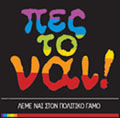The Romaniote Jews in Ioannina and N.York, an exhibition
Posted by Abravanel, the Blog στο 05/05/2008
Here’s an interesting exhibition that I was informed about by Kehila Kedosha Janina. It is a photographic journey among the romaniote Jewish Community of Ioannina/Janina in Greece and their american brethren who arrived from this community and established the Romaniote Community of New York by founding the Kehila Kedosha Janina Synagogue.
Since 2005, has documented on film the triumphant traces and living legacy of the ancient Jewish Romaniote community in Ioannina, Greece, and at the Kehila Kedosha Janina Synagogue on the lower East Side of New York City. In Ioannina, barely 35 members of the Kal Kedosh Yashan Synagogue bear witness to this once vibrant community. In Giordano’s attentive photographs, the Romaniote Jews in Greece and America share their compassionate devotion for their special ancient form of Judaism, looking back to 2300 years of history. Images of Torah scrolls, tiks, and the joyous celebrants of Romaniote Judaism look forward to the future, preserved here for prosperity.
Before the Flame Goes Out celebrates two distant Jewish communities connected by history and ritual. Since 2001, Vincent Giordano has documented the Romaniote Jews of Ioannina, Greece and New York City, with their roots in the Judaism of the ancient world.Only one synagogue in Ioannina – Kehila Kedosha Yahsan, built in 1829 – survived the Holocaust. Its interior Ottoman-style courtyard has a fountain for hand washing. A spacious sanctuary serves for congregational prayer. Benches face center leaving an open area for the procession of the Torah Scrolls. An impressive bimah (reader’s platform) is on the western wall; the marble Echal Kodesh [Holy Ark] is on the east wall. Behind the embroidered curtain (parokhet) are Torah Scrolls, encased in tikkim (silver or wooden cases). Women formerly sat in an upper gallery behind a wooden screen.
Ioannina Jews created a new religious life at Kehila Kedosha Janina, built in 1927, on Manhattan’s Broome Street. The facade indicates the building’s public and Jewish nature, but inside is as intimate as a neighborhood clubhouse, in the manner of many small prayer houses that once dotted the Lower East Side. But the dominating bimah and the benches along the walls facing inward also recall Ioannina. In this narrow sanctuary the Echal Kodesh appears squeezed by the women’s balcony, as it rises two stories.
The many religious and commemorative fittings ultimately overwhelm the architecture. Together, they fulfill the commandment from Exodus 15:2 which exclaims: «This is my God and I will glorify God.» These objects, and the ceremonies in which they are still used, knit together the history of this dwindling but tenacious congregation, its memories of Greece, and the life of New York’s Romaniote community.
The web address of the exhibition is : http://www.mobia.org/exhibitions/detail.php?exhibition_id=49
You can also find a small slide show here: http://www.mobia.org/slideshows/?slideshow_id=15
(the pic: A man helping his son with his prayer shawl, Kehila Kedosha Janina Synagogue, NYC, 2007 At the Seth Kofinas Bar Mitzvah)





plagal said
I find it fascinating from a Greek cultural point of view to read that a major religious element of the synagogue, the reader’s platform, is named «bimah» i.e. «βήμα». It makes perfect sense, really. It’s exactly the name used for the reader’s platform in ancient congregations of any type, such as the Pnyx and it is still used for that in modern congregations, such as the Parliament.
I’ve written it elsewhere, the destruction of the Greek Jews is most probably the second gravest loss that Hellenism suffered in the 20th century.
Abravanel said
Here’s another one:
One of the most «fun» moments of the Sheder, ie the Passover dinner, is when small kids search for the afikoman. It’s a small piece of matza which is hidden and the kids must find it in order to get a reward, in form of candy. It’s purpose is solely to keep the kids up and not bore them through.
Well imagine where the words derives from: the greek epikomion, επικόμιον which as you know, (but english speakers don’t ;) ), means «after dinner».
http://www.balashon.com/2006/04/afikoman.html
In any case the persistence of a greek speaking jewish community in New York, which is founded by immigrants who had emmigrated there before even Ionnina becoming a greek city, is definately one mighty contradictory case in what should we consider greek and what not.